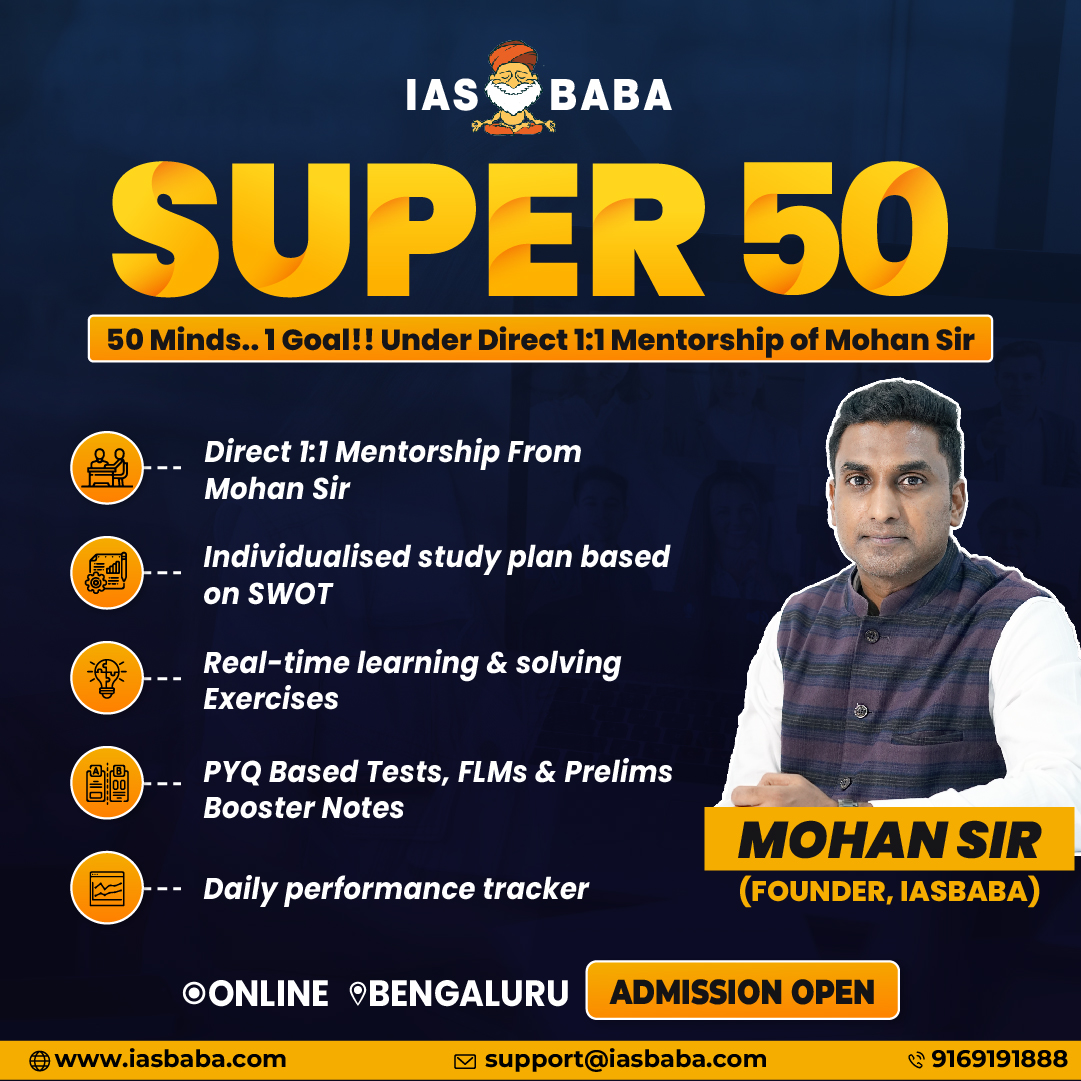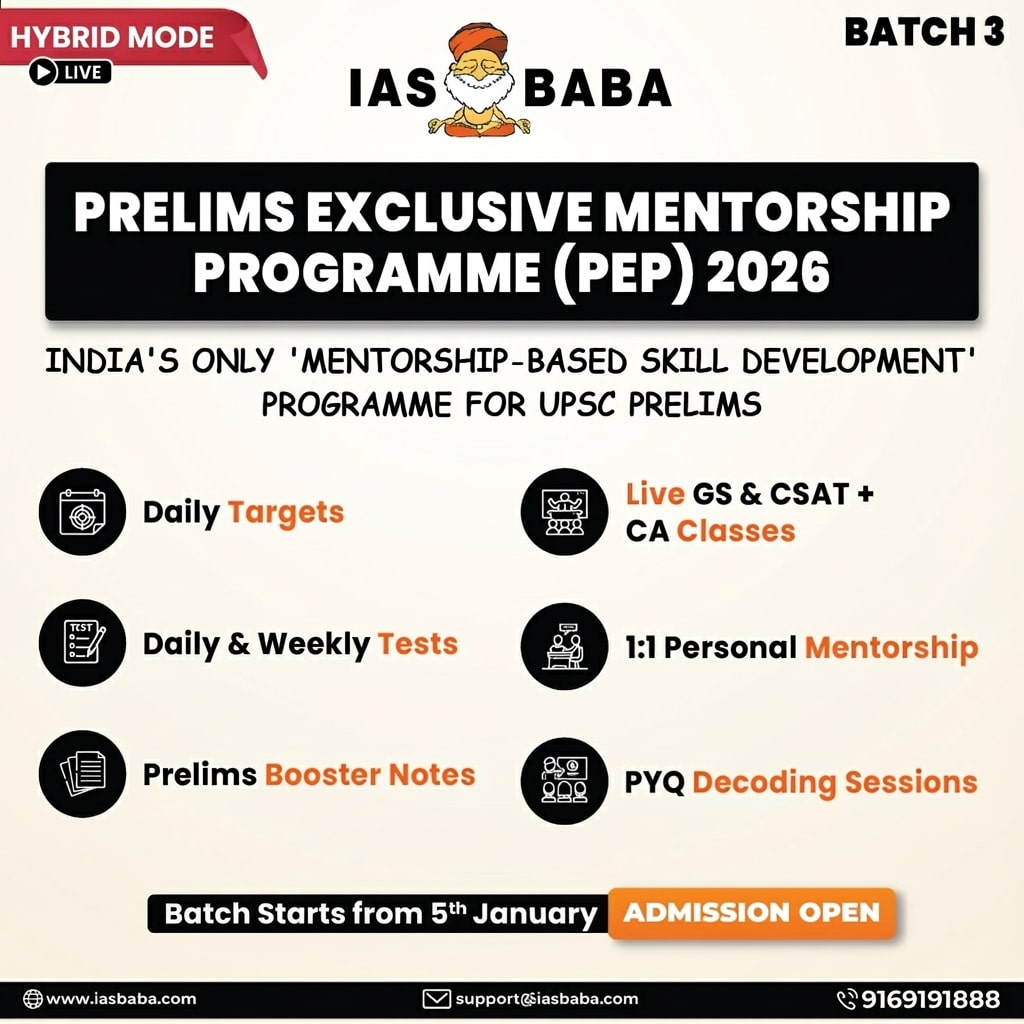Indian Economy, TLP-UPSC Mains Answer Writing
Q. 2. NITI Aayog was established nearly a decade ago with the aim of promoting cooperative federalism and long-term policy thinking. To what extent has it fulfilled its objectives? What challenges has it faced, and what reforms are needed to enhance its effectiveness? (150 words, 10 Marks)
Introduction
Established in 2015, NITI Aayog replaced the Planning Commission as a policy think tank to foster cooperative federalism and long-term strategic planning, steering India toward evidence-based policymaking and bottom-up development.
Body
Core Objectives of NITI Aayog
- Inclusive Development: Ensure equitable growth with a special focus on sections at risk of being left behind.
- Bottom-Up Planning: Enable village-level credible plans through robust data and analysis.
- Cooperative Federalism: Act as the Team India Hub—facilitating Centre–state collaboration and inter-sectoral coordination.
- Innovation & Entrepreneurship: Promote an ecosystem that encourages innovation, enterprise, and tech upgrades.
- Knowledge Repository & Capacity Building: Serve as a resource centre offering policy research and technical capacity enhancement.
Performance and Achievements
- Regional Equity: Aspirational Districts Programme improved key indicators like health, education, and infrastructure in 112 backward districts.
- Federalism in Action: Functioned as a Team India Hub, encouraging cooperative federalism through the Governing Council and promoting competitive federalism via state indices and rankings.
- Tech Foresight: Formulated strategies on AI, blockchain, and gig economy, aligning India with global tech trends.
- Mission-Driven Innovation: Led initiatives like Atal Innovation Mission, National Electric Mobility Mission, and One District One Product to boost entrepreneurship and local manufacturing.
- Crisis Coordination: Acted as a nodal agency during COVID-19, ensuring Centre–state collaboration on supply chains and public health.
- Knowledge Reports: Published evidence-based reports like Strategy for New India @75, Export Preparedness Index, and India Energy Outlook, guiding ministries and states on sectoral reforms and global competitiveness.
Key Challenges
- Lacks Fiscal Autonomy: Without authority under Article 275(1), it cannot allocate funds or grants to states.
- Limited Enforcement Power: Lacks statutory backing; even flagship recommendations (e.g., Health Index reforms) are not binding.
- Centre–State Discontent: States like West Bengal and Punjab have skipped meetings, citing over-centralisation and poor follow-up.
- Governance Gaps: Only four Governing Council meetings were held in the first six years, reducing real-time consensus building.
- Exclusion from Inclusive Growth: Despite focus on equity, lacks targeted strategies to reduce rising inequality (Oxfam: top 10% own 77% of wealth, 2023).
- Uncritical of Government Policies: Functions more as a platform for affirming government schemes rather than offering independent critique.
What Needs to Be Done
- Statutory & Fiscal Empowerment: As the 15th Finance Commission recommended, evolve into an institution with budget and grant authority.
- Strengthen Bottom-Up Planning: Integrate Gram Panchayat data, enabling truly democratic development models.
- Boost Think Tank Capacity: Attract domain experts, improve policy feedback loops, and align with ARC-II’s call for inclusive governance.
- Implement NITI 2.0 Vision (Vijay Kelkar Recommendations):
-
- Rename NITI Aayog as the Strategic and Knowledge Commission of India. • Empower it to allocate capital and revenue grants to states.
- Allocate 1.5–2% of GDP as dedicated funding.
- Make Vice-Chair a standing invitee to CCEA for stronger Centre–state policy linkages. • Retain its strategic role but delink it from approving annual state financial expenditure.
Conclusion
NITI Aayog has laid the groundwork for a 21st-century governance model. Empowering it with fiscal authority, deeper federal engagement, and strategic autonomy—as suggested by Vijay Kelkar—can make it India’s true engine of transformation.














